
[James Wenley explains why targeted support for Aotearoa’s performing arts and events sector is urgently needed to help see us through the Delta outbreak.]
We know that Delta is different.
And so has the impact of Delta on Aotearoa’s performing arts and live events sector this year.
Despite the move to level 2 outside of Auckland, our performing arts sector largely remains mothballed nationwide. In a case of déjà vu, artists and crew are once again staring down months more of lost work. But this time, there has been no targeted relief for the arts and events.
The Government recognises Delta is different through the increased stringency of its public health measures. Masking. Scanning. Fewer people able to gather in Delta alert level 2.
So why hasn’t the Delta difference been recognised in the Government’s support of the performing arts during this lockdown?
Once again, performing arts practitioners have been playing their part in the effort to eliminate Covid. Arts and event people know their audiences, and the importance of keeping audiences comfortable and safe. We don’t see calls from the performing arts sector to move more quickly down the alert level scale. We know that elimination is the best outcome for our industry.
But these measures have a disproportionate impact on the sector’s ability to operate compared to many other businesses that are able to open (albeit not always at full capacity) once the levels slide down.
We play by the alert level rules to prevent our health system from being overrun, to ensure our ICU beds remain available for everyone who needs them.
We need to take a similar approach to our performing arts and live events sector. We know it has its own social and health contribution to make when it is safe to gather again. We know that theatre for example contributes to wellbeing, a sense of community, and boosts empathy. We know, especially after last year, that the arts and live events have a crucial role to play when coming out of lockdowns.
But I am not being dramatic when I say that without an intervention, Aotearoa’s performing arts and live events sector could rapidly end up on life support.
There are economic arguments to make too. The performing arts are a vital part of Aotearoa’s wider creative ecology and industry, which the Government acknowledges contributes “nearly $11 billion a year to GDP, employs 90,000 people and supports the wellbeing of communities.” (The creative industries compare favourably to Agriculture, which contributes $12 billion a year to GDP). Live events help hospitality, a sector also struggling – and are complementary too in that they often share workers.
This article represents my current research interest in the impact of the pandemic on Aotearoa’s theatre ecology and follows on from previous previous commentary. There are two main aims I have for this particular piece:
- To compare the support offered to Aotearoa’s performing arts sector during the 2020 Alpha lockdown and the 2021 Delta lockdown, and why it is so different this time.
- And to support a call for meaningful and immediate action to safeguard Aotearoa’s community and professional performing arts.
You can read on for the full analysis, but I thought it was worth up top addressing what we can do, right now.
The performing arts and live events sector requires immediate and targeted funding to overcome the challenges of the current delta outbreak.
You can amplify the existing calls for funding relief by writing to our arts ministers. Tell them you value live performance and events, that the sector requires urgent assistance, and that we need them to act.
Here is a google doc template you can use and adapt to write to ministers Hon Carmel Sepuloni (Minister for Arts, Culture and Heritage), Rt Hon Jacinda Ardern (Associate Minister for Arts, Culture and Heritage), Hon Kiri Allan (Associate Minister for Arts, Culture and Heritage) and Hon Grant Robertson (Minister for Sport and Recreation). All the details are in the doc. This is an action you can take today.
UPDATE: Multiple Arts Organisations sent an open letter on 14 September to Manatū Taonga Ministry for Culture and Heritage calling for “swift and responsive action.” You can read the letter and add your name in support to the advocacy.
Read on for the full analysis and context for this call to action:
A Tale of Two Lockdowns
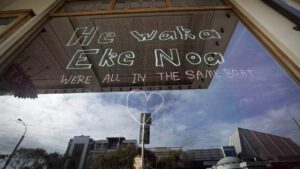
Last year, when Covid-19 first made its unwanted entrance in Aotearoa, events moved fast. And by moved, I mean cancelled. Show after show unable to go on, until – conclusively and dramatically – the whole country entered lockdown on 25 March 2020. Collectively, we were in a state of shock.
Soon online events began to pop up and pivot, helping to maintain connection.
Creative New Zealand came to the party. Drawing on their reserves, the funding floodgates opened to support the arts sector. It wasn’t everything, but it was enough to keep the stage lights burning.
Compared to the rest of the world, with the exception of brief periods at higher alert levels (which must be noted did disrupt performance and had longer knock on effects), Aotearoa enjoyed an almost unrivalled stretch of gathering time where our performing arts proved just how essential they are. Think back to that show or concert, the people around you, the memories you treasure.
But now, thanks to Delta, all that is at risk.
This lockdown has felt different. There’s the outsized burden faced by Aucklanders. And perhaps because of the piecemeal extensions, there hasn’t been that same sense of purpose. The arts sector pages on Facebook haven’t been as active. We’ve resisted the pivot to online theatre. The arts community hasn’t had the adrenalin rush to kick us into the survival mode of 2020.
The shock of the unexpected-expected sudden lurch into delta lockdown quickly gave way to the grim task of cancelling work, ‘unproducing’ events. The arts community is well practiced in this by now. Auckland Theatre Company pushed pause on the world premiere of Things That Matter by Gary Henderson, which had been due to preview on 17th August – the same day that the level 4 lockdown was announced. Venues throughout the whole country went dark.
What have we lost? Erin Harrington wrote a poignant piece offering “an alternate vision of a time not spent in lockdown” of the arts activity of Ōtautahi Christchurch. Along with performances at the Court Theatre, Little Andromeda, WORD Christchurch and more:
“there were quizzes, theatre school open days, meetings, auditions, rehearsals, costume fittings, agenda revisions, pack ins, pack outs, coffee dates, last drinks. Administrators got their CNZ funding applications in as soon as the round opened. Everyone went to bed satisfied and hopeful.”
On September 1st, the Whangārei Fringe Festival announced they were postponing the 2021 festival (originally scheduled 1-17 October) as “the current Covid situation has made it difficult to predict whether the festival could go ahead as planned.” In Te-Whanganui-a-Tara, the World of WearableArts show was cancelled for a second year in a row after being unable to secure alternative dates (though underwriting for this event from the Wellington City Council helps considerably). There are countless stories across the country of shows big and small that could not go on.
At the time of writing, it has been 29 days since a case of delta was found in the community and New Zealand entered a level 4 lockdown.
So far, there has been no indication there will be any targeted support on offer to support the arts sector in the delta environment.
Last year, 20 days after New Zealand entered a level 4 lockdown, Creative New Zealand announced an emergency response package. In the next two and a bit months, CNZ invested $29 million through its phase 1 emergency response. Two crucial components included arts continuity grants for short term projects that could be delivered under changing alert level conditions, and an emergency relief grant that provided a top-up to arts practitioners receiving the Government’s wage subsidy.
The difference now is that CNZ doesn’t have any more money to spare. That $29 million was made up of diverted funding and CNZ’s reserves, but that is all spent up.
So too is the Government’s injection of $25 million to CNZ, announced on 25th May last year (exactly 2 months after the first lockdown began). This funding was intended to be delivered over two years, but CNZ deployed it towards a 12-month programme of investment till June 2021. It was the biggest Government investment in CNZ for two decades, but it still was only enough for a year.
In a post on September 1st, ‘Wayfaring through this Delta COVID uncertainty’, CNZ Chief Executive Stephen Wainwright signalled that the sector would have to wayfare without the certainty of the support CNZ offered in 2020: “As we drew heavily on our reserves last year to support the sector with our COVID-19 response, this year we don’t have as much pūtea (money) to do anything new – you can only spend your reserves once!” CNZ have also confirmed to Stuff it ‘had limited capacity to deliver additional support “over and above our current offerings.’”
CNZ has indicated in phase three of its response that it is focused on future proofing the grants system. The Ministry of Culture and Heritage have their own funding programmes. But none of them address the current Delta crisis. As Sam Brooks asks, “what about the artists who had their work cancelled last month, today, or in the weeks and months to come?”
Wainwright says “the broader support ecology is richer now than it was in March 2020.” But there’s a dedicated $29 million of support missing from the picture this year compared to last – and a good chunk of that aided independent artists. Where are they to turn?
Currently there are two non-targeted avenues people in the performing arts industry can turn to:
- The wage subsidy for business and self-employed people who meet the eligibility criteria (40% drop in revenue due to alert level 4 or 3)
- The Covid-19 Resurgence support payment for viable and ongoing businesses and organisations during alert level 2 and above (30% drop in revenue over a 7 day period due to an increased alert level)
While both are undoubtedly a lifeline, they come with limitations. Especially so when it comes to accessing the wage subsidy under level 2 alone (in the latest wage subsidy round, those operating in level 2 can only claim it if they can “pin their sales drops to the situation in Auckland”).
A resumption of CNZ’s emergency relief grant would be a considerable aid over this period.
CNZ demonstrated last year they had the processes and capacity to deliver a targeted cash injection into the arts. CNZ’s emergency response helped provide security to both its funded clients and the wider sector. We didn’t see widespread cases of companies or organisations folding. While it didn’t address long-term precarity, independent artists kept going. The emergency response package was fundamental for the ability of the performing arts to bounce back last year, responding to the high demand for live arts experiences over the past year.
What other targeted assistance could aid the performing arts and live events sector?
The Victoria Government in Australia has its own live performance support programme. The United Kingdom has offered a £750 million government-backed Covid-19 insurance scheme for live events. As Stuff’s Andre Chumko explains, “the scheme sees insurance companies providing cover for events, with the government agreeing to act as a re-insurer, guaranteeing that any pay-outs would be funded.” (Although, in practice, the scheme hasn’t fully delivered due to the UK Government obfuscation.) Chumko reports that a similar pandemic insurance scheme was put to NZ officials months ago, but progress has stalled.
Why the lethargy? The time to have implemented this would have been months ago, especially as we began to see the spread and effect of delta around the world. But when we eliminate delta (and I’m remaining optimistic here), such a scheme would certainly help provide confidence for producers looking to put on large-scale events for the rest of the year. And wouldn’t it be great if it was extended to small-scale events too – perhaps linked with participating venues?
Sally-Anne Coates, general manager of Entertainment Venues Association of New Zealand (EVANZ), has warned Jacinda Ardern in an open letter that “without immediate targeted support our industry faces mass closures and large-scale redundancies.”
CNZ’s support and other measures were critical for supporting the performing arts in 2020. So far, compared to last year’s lockdown, support has been dangerously slow to arrive. But an intervention is all the more critical now. Having spent everything (financially, mentally) to get through last year, the industry is exhausted and cash reserves and spirits are low.
As I will explain in the next section, it is going to be a great deal more difficult to do it all again and come out the other side in the delta environment.
Does the Show Go On @ Delta Level 2?
There is major alarm in the sector that under the revised Delta level 2 settings it is not viable for most public performances to resume. As Sally-Anne Coates says, “the new alert level 2 restrictions mean that live events in New Zealand are currently impossible.” CNZ’s Stephen Wainwright acknowledges “that the sector can only operate viably at the current alert level 1 settings.”
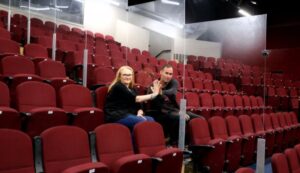
Last year, some canny venues gained permission to erect barriers/safety protection screens in the auditorium and split their auditorium four ways – increasing the then cap on indoor audiences in level 2 from 100 to 400. Auckland Theatre Company, Court Theatre, and Palmerston North’s Regent on Broadway (which first instigated this initiative) were able to stage seasons during the old level 2 this way.
But our understanding of the virus has developed, and safety protection screens won’t stop Delta (just look at the questions around the Crowne Plaza – the ASB Waterfront Theatre doesn’t want that kind of scrutiny!). Pertinently for theatre venues, delta can spread through airflow.
And thus, under Delta level 2, there is a cap of 50 people in an indoor venue, 100 people outside. From the Government’s Covid-19 page: “You legally must keep 1 metre apart from people you do not know. We encourage you to wear a face covering if physical distancing is difficult.”
When the Government announced the new Delta level 2 conditions on Monday 6th September, there was a lack of clarity around what this meant for the performing arts.
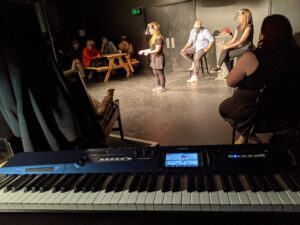
For example, what was the deal with performers and masks? In order to open at level 2 last week in Christchurch, the performers of Little Andromeda’s improv show Perfuct Storm opted to wear plastic visors to meet apparent requirements. Stuff’s Charlie Gates reported “Little Andromeda director Michael Bell said they had called the Ministry of Health advice line and been told that performers should wear masks if they were 1 and 2m from the audience.” Gates adds that “The Ministry of Health referred questions about whether performers in level 2 had to wear masks to the Department of the Prime Minister and Cabinet (DPMC). A DPMC media adviser was unable to answer the question within 24 hours.” (If there is 1 metre + distance, it appears from the legislation that performers do not need to be masked – but the types of shows in small venues that might open in level 2 will need to assess their own contexts, and audience comfortability.)
On September 7th, ETNZ (Entertainment Technology New Zealand) posted on Facebook that their organisation were “waiting further clarification on our queries to government” about the implications of the new delta level 2 restrictions.
Andre Chumko reported that Ministry of Health officials failed to turn up to a workshop last week held to support the events sector and how it could operate safely in changing alert levels. Mark Gossling, trust member of Entertainment Venues Association New Zealand (EVANZ) expressed that “we are not finding anyone in the Ministry of Health we can have a conversation with… We are not being deemed important in the greater collective struggle. It is like we are an acceptable loss, collateral damage.” A statement from the Ministry of Health read that it is “happy to engage with these groups to discuss operating safely at different alert levels, however finding the time to meet is currently challenging as officials are focused on the Covid-19 health response.”
While the need to focus on the health response is understandable, the impression is that there is nobody in the Government looking out for the arts and events sector during the Delta outbreak.
It is frustrating that Government officials have not been forthcoming in providing clarity for the sector. It has meant individual shows like Perfuct Storm have had to carry the burden of trying to understand and test the new rules.
That’s difficult enough when artists are having to make line calls about whether they can ethically, artistically, and financially continue in Delta level 2. We ended up cancelling a small season of my own show which had been scheduled to perform in Wellington next week – but that added up to hours upon hours of discussion and agonising. My situation has been repeated up and down the country, and will continue repeating while the Delta trail drags on.
Already we can see the impacts of Delta level 2 on live performance in areas outside of Auckland. While here in Te-Whanganui-a-Tara, BATS theatre has opened, Circa Theatre (which opened for previous level 2s), is remaining shut. Circa’s Gavin Rutherford explains that “50 is not economically viable for us or the people doing the work. We have made the decision that no performances can go ahead.”
Similarly, in Ōtautahi, Court Theatre won’t be opening till level 1. In a telling comment from chief executive Barbara George regarding their usual audience expectations, she said “fifty people in an audience would be like having no-one there. It would be very tough for the actors.”
Sam Brooks has gone into detail on The Spinoff on ‘What the 50 person limit means for New Zealand’s live events industry’. Producers like Eleanor Strathern had made contingency plans to ensure shows would still be feasible at the old level 2 rules, however, told Brooks that these were “no longer financially viable under the new delta level two.”
It is not clear how long the rest of Aotearoa might remain at Delta level 2, or how long Tāmaki Makaurau would need to stay there when it eventually moves down alert levels. Some are anticipating Level 2 till Christmas. Prime Minister Ardern has assured that the goal is to get back to level 1. Last year, shows in Tāmaki Makaurau were much slower to reopen compared to the rest of the country (not to mention Auckland has already experienced a greater length of time in levels 4 and 3 compared to the rest of NZ). Most productions cannot open immediately. It is going to take a while, especially for Tāmaki Makaurau based events and practitioners. The stakes are high. And the sector cannot afford any further cancellations.
This is why we need targeted support for the arts that accounts for the fact that most performance cannot go ahead in Delta level 2. As Sam Brooks put it, “without proper support, the issue won’t be getting audiences to come out to shows, it’ll be having artists to actually go and see.”
Community Performing Arts Needs Help Too
One essential part of our arts ecology that was largely overlooked for targeted support last year was community theatre. Stuff reports that in 2020 a group of 93 community theatre groups collectively lost about $1 million in revenue and incurred costs of $500,000. That’s a lot for groups that largely rely on membership, ticket sales, and trusts funding.
It has been especially tough on those producing the big community musicals. This lockdown has seen North Shore Music Theatre’s Wicked reschedule to 2022, and Showbiz Christchurch cancel (again) its production of Buddy Holly, losing hundreds of thousands of dollars. Act Three Productions is down $110,000 for its cancelled We Will Rock You season. Nelson Musical Theatre, $30,000 in debt for its Mary Poppins season, says it will not be able to stage a major musical for two years: “If we attempted to do another large scale show and then got stung by Covid again we would fold.” (Stuff)
Musical Theatre New Zealand president Helen Horsnell has a stark message: without Government intervention, the community sector “may cease to exist.” Horsnell has called for support from the Government and CNZ: “In non-Covid times, these groups are largely self-sufficient but are now needing a lifeline.”
But with CNZ’s funding already overstretched, it will require urgent and decisive action from the Government to support community theatre and arts. Community theatre provides access to the arts, enriches lives, and yes, builds stronger communities. There has never been a more important time to support it than now.
Opening Up Overseas
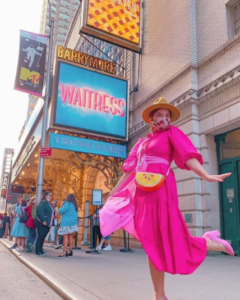
The performing equivalent of the ‘nature is healing’ posts has been the sight of Broadway theatres reopening. After an 18-month hiatus, Waitress and Hadestown became the first musicals to reopen earlier this month (Hamilton, Wicked and The Lion King have just reopened). The footage of the openings are electric – audience standing and cheering at the first sight of actors.
While these shows can play to full venue capacity, we still had a better deal in NZ prior to the latest lockdown. On Broadway, audiences must wear masks during the show. And they all must be fully vaccinated.
The UK has had a wobbly reopening. While theatres could open their doors on May 17, they have continued to face cancellations as company members tested positive or were required to isolate following potential exposure events. Physical distancing is no longer required in venues, but masking and proof of vaccination are encouraged for events. Last month, a vastly scaled back Edinburgh Fringe (with many online shows), produced a fifth of its usual number of shows.
In France, a health pass (full vaccination or negative Covid test) is required to enter venues with over 50 seats. In Singapore, audience are required to “undergo Pre-Event Testing (PET) if you have not completed the full vaccination regimen at least 14 days prior to performance date.”
Prior to our delta outbreak, Aotearoa had been one of the few international outliers offering live performance without any restrictions.
These international examples give us a glimpse of what the future of our live events might look like (“Tickets and vaccine passport?”) and the difficult choices that could be ahead in providing access to the arts.
Action, now
But for now, our country remains focussed on eliminating Delta.
And while doing so, we must also ensure that we safeguard our performing arts sector.
There is money. Finance Minister Grant Robertson has the ability to spend up to $41 billion of unexpected expenses from the delta outbreak. There are many groups that need urgent support. People in poverty, renters, students, hospitality, tourism… the list goes on. Arts and events need to be advocating too, making the case for support.
You may very well ask, where are the arts ministers in all of this? Andre Chumko reports Arts, Culture and Heritage Minister Carmel Sepuloni is keeping “a ‘watchful eye’ on the situation, including receiving advice on what other measures may be needed to ensure the sector ‘not only survives, but thrives’. ‘We know it’s a challenging time for the sector and that this may continue in the months ahead.’”
The arts sector needs more than a watchful eye. We need action – now.
Following the announcement of delta level 2 revisions on 6th September, Auckland Pride director Max Tweedie immediately called on the Government to increase support for the arts in response to new alert level guidelines, advocating for “specific funding for Creative NZ to complement existing financial support, and to fill the gaps in resourcing the creative industries at Alert Level Two. Support for artists, producers, technical teams, and everyone behind the scenes is critical to ensuring the ongoing sustainability and viability of the creative arts in Aotearoa.”
The NZ Comedy Trust followed, calling for an extension of the wage subsidy scheme to live events workers and artists during level 2, and specific funding for CNZ to offer financial support.
EVANZ wants greater venue support, asking for “urgent funding to be allocated directly to the venues that provide the essential infrastructure, services and support that enable the live events sector to thrive.”
Te Taumata Toi-a-Iwi has endorsed calls for Resilience funding, and reiterated the need for a national ngā toi strategy.
It is encouraging to see the leadership of these individual organisations.
But it does rather reveal the lack of a wider network or campaign.
What we need now is a broad coalition of organisations, sector leaders and practitioners to join together to mount a coherent campaign for targeted support for Aotearoa’s arts and creative ecology.
This must centre independent artists and practitioners.
Creative New Zealand is not in a position where it can publicly advocate for increased funding.
It is up to us to tell the Government what we need them to do.
We can amplify these existing calls for sector relief by writing to the ministers advocating for targeted support for performing arts and live events in the delta environment. To support the sector, the Government should:
- Give an immediate funding boost for Creative New Zealand of $30 million to undertake a new emergency response package modelled off last year’s response, including the emergency relief grant which supports independent practitioners.
- Offer a dedicated fund to support the resilience of amateur and community performing arts organisations.
- Offer emergency funding to support the resilience of live events venues.
- Extend the wage subsidy scheme to support artists, practitioners and live events workers affected by Delta alert level 2 restrictions.
- Establish an insurance underwriting scheme for live events, for at least one year’s duration. This acknowledges the ongoing risk of cancellation as the vaccination continues to roll out and we begin reopening to international visitors as part of the reconnecting New Zealand strategy.
- Begin work on a national ngā toi strategy as advocated by Te Taumata Toi-a-Iwi to support the longer-term growth of the arts, culture, and creative sector, including specific support for Toi Māori.
The implementation of some of these measures will help support live performance and events to survive. Implementing all will begin to ensure the sector thrives, as Carmel Sepuloni desires. And implementing no targeted support… well that will be devastating.
The livelihoods and careers of many in the arts and events community are counting on support to get through the delta outbreak – whether they be kaiwhaakari (an actor), pūkenga tūrama (a lighting technician) or kaihāpai o muri (a backstage worker).
In the words of a high-profile arts advocate, the arts make an essential contribution to the economic and social health of Aotearoa:
“Now more than ever we need a thriving arts and cultural sector. We saw in the aftermath of the Canterbury earthquakes the potential of creativity and culture to create jobs, drive economic recovery and enhance social wellbeing, and they can help us do it again.”
That, by the way, was Jacinda Ardern.
Jacinda – help us with support now to help us do that again in the future.

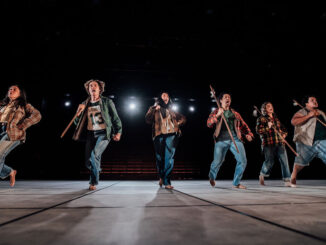
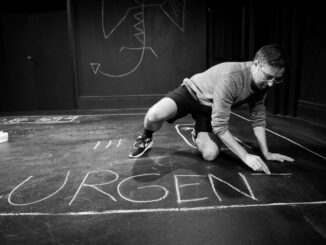
Leave a Reply